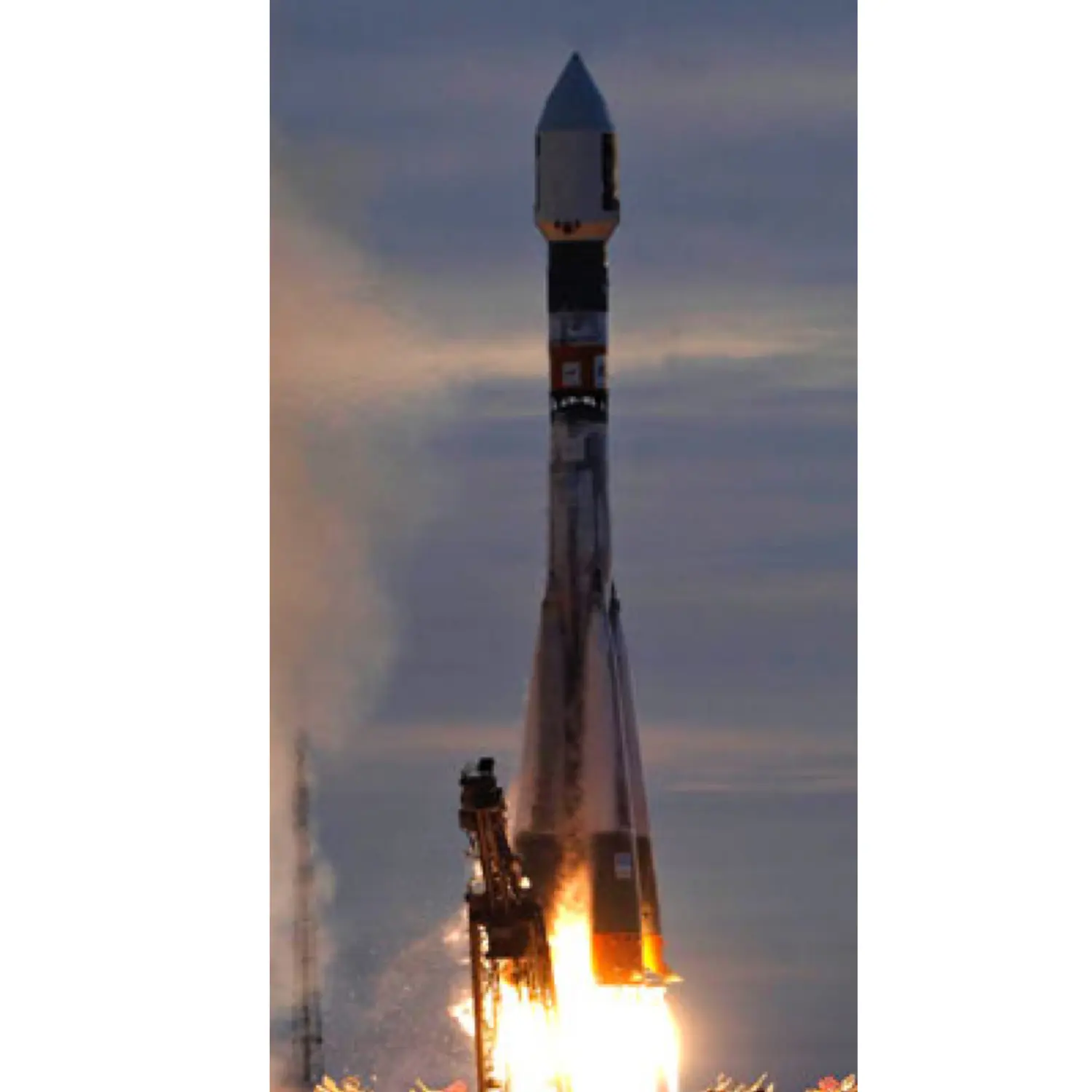Kanopuss-V n°01, Zond-PP & Others
Launch Success
Liftoff Time (GMT)
06:41:39
Sunday July 22, 2012
Mission Details
Launch Notes
Last flight of Soyuz FG with a Fregat upper stage.
Kanopuss-V n°01
Kanopus-V (Kanopus-Vulkan) is a small Russian remote sensing satellite. Provision of the Ministry of the Russian Federation for Civil Defense, Emergencies and Elimination of Consequences of Natural Disasters, Ministry of Natural Resources of the Russian Federation, the Federal Service for Hydrometeorology and Environmental Monitoring, Russian Academy of Sciences operational weather information for the following major tasks: - Monitoring of man-made and natural emergencies, including natural weather phenomena; - Mapping; - Detect pockets of forest fires and emissions of major pollutants in the environment; - Registration abnormal physical phenomena for earthquake prediction; - Monitoring of agriculture, water and coastal resources - Land use;
Sun-Synchronous Orbit
1 Payload
473 kilograms
BelKa 2
BKA (formerly known as BelKa 2) is a Belarusian remote sensing satellite that replaces the BelKa 1 satellite lost in an launch failure. The BKA satellite is a virtual copy of the russian Kanopus-V 1. The resolution up to 2.1 m and four spectral channels of the target-oriented equipment allow for national economic tasks to the benefit of MINECONOMRESURS, Ministry of Natural Resources, Federal Geodesy and Cartography Service, EMERCOM, etc. In addition to key tasks the spacecraft will enable scientific and applied researches in the Earth and atmosphere remote sensing. The satellite was built by NPO VNII Elektromekhaniki, who subcontracted the avionics suite to SSTL.
Sun-Synchronous Orbit
1 Payload
473 kilograms
Zond-PP
Zond-PP or MKA-PN 1 is a microsatellite designed to study the characteristics of the earth's surface by using a L-band UHF panoramic radiometer and is aimed at mapping of soil moisture and water salinity waters, and study the land-ocean-atmosphere energy system. The results will be used for forecasting changes in the environment and climate. Additionally a multi-spectral camera (Pribor EK) was installed onboard as a secondary payload. The Zond-PP is based on Lavochkin's Karat microsatellite bus.
Sun-Synchronous Orbit
1 Payload
156 kilograms
exactView 1
exactView 1 (EV 1), formerly known as ADS-1b, will form part of the exactEarth (COM DEV) AIS constellation to monitor ship movements through busy shipping channels and harbours and to provide information on global shipping movements. It is a follow-up mission to the CanX 6/NTS satellite. The Automatic Identification System (AIS) is a self-organizing TMDA radiocommunication system used for the identification and location of maritime vessels. AIS transponders are required by the International Maritime Organization on all vessels over 300 tons and all passenger vessels. Communication is line-of-sight, allowing countries to monitor ships within about 50 km of their shores. A space-based platform allows monitoring of much larger areas, especially in areas that are difficult to monitor through more traditional base station means. exactView 1 features a AIS-receiver with two polarizations and four channels and a C-band data downlink.
Sun-Synchronous Orbit
1 Payload
100 kilograms
TET 1
TET-1 (Technologieerprobungsträger 1) is the core element of DLR's On-Orbit Verification Program(OOV). The main aim of this program is to test new space technologies in a space environment over a period of one year. Eleven experiments are accommodated by Kayser-Threde on board the satellite which has a mass of 120 kg. The TET-Bus is based on the BIRD satellite structure. TET-1 was scheduled for launch mid 2010 on a Soyuz-FG Fregat rocket as a secondary payload, but was delayed to 2012. The satellite was released in a sun synchronous orbit at an altitude of approximately 500 km. Kayser-Threde GmbH received in July 2008 the prime contract for the space and ground segment as well as launch services for the satellite mission TET-1 from the Space Agency of the German Aerospace Center (DLR). The project volume of the Phase C/D amounts to 21 million Euro. The TET-1 satellite platform was built by Astro- und Feinwerktechnik Adlershof GmbH (Astrofein) under contract of Kayser-Threde GmbH, who are the prime contractor for the mission. The contract entrusts Kayser-Threde and its subcontractors with all aspects involved in the construction and manufacture of the satellite, the various tests for space flight qualification, the necessary infrastructure for the satellite mission and all preparations required for launch. The TET-1 mission will be carried out under contract to DLR with funds from the German Ministry for Economics and Technology (Bundesministerium für Wirtschaft und Technologie).
Sun-Synchronous Orbit
1 Payload
120 kilograms
Rocket


Manufacturer
RKK EnergiyaRocket
Height: 43.5m
Payload to Orbit
LEO: 7,300 kg
GTO: 1,800 kg
Liftoff Thrust
4,550 Kilonewtons
Fairing
Diameter: 3m
Height: 8.1m
Stages
4
Strap-ons
4
Launch Site
Stats
Soyuz FG
40th
Mission
3rd
Mission of 2012
2012
41st
Orbital launch attempt